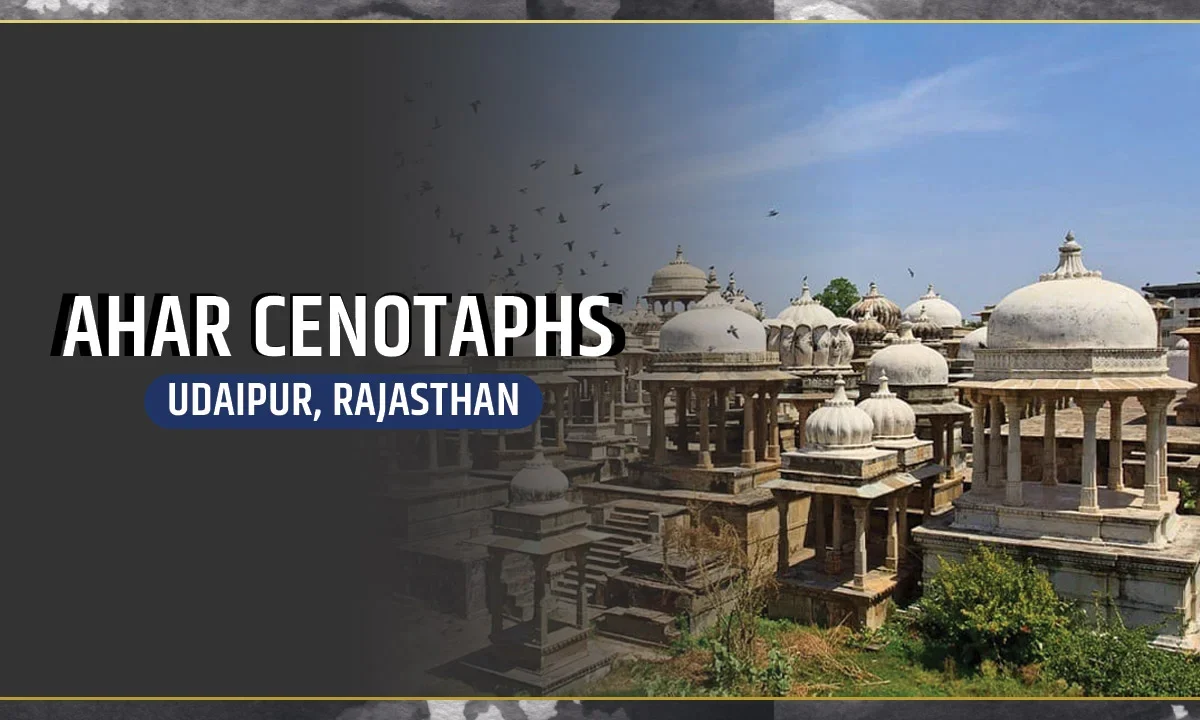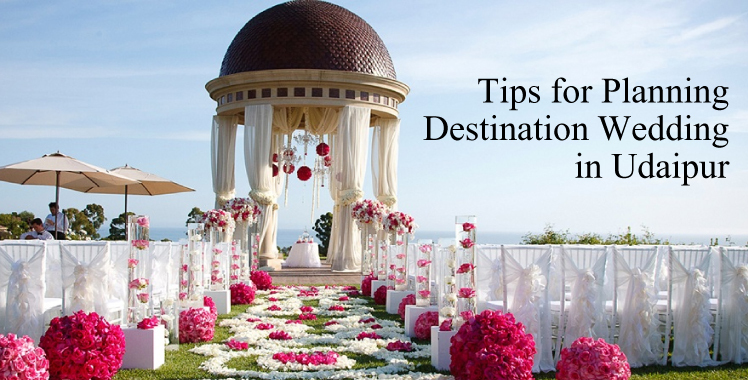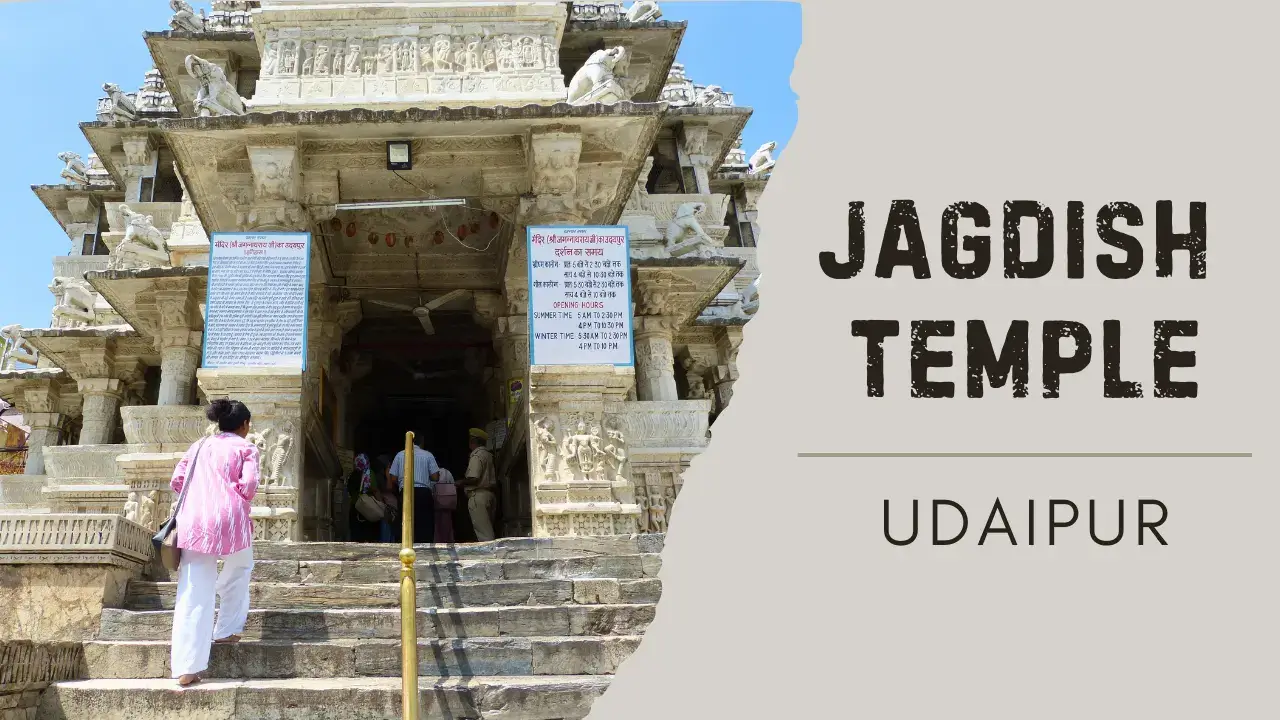
3 Days in Udaipur: The Ultimate Travel Itinerary and Guide
July 18, 2025
Jagdish Mandir Udaipur: A Timeless Temple of Devotion
August 12, 2025Udaipur, known for its royal palaces, serene lakes, and vibrant culture, holds another remarkable gem that often goes unnoticed – the Ahar Cenotaphs. Situated just a few kilometers from the heart of the city, the Ahar Cenotaphs in Udaipur stand as a tribute to the Mewar rulers, their legacy, and the region’s rich history. These ancient structures are not just architectural marvels but also deeply rooted in the cultural fabric of Udaipur. A visit here is a must for anyone on a comprehensive Udaipur sightseeing tour, offering a peaceful yet powerful insight into the city’s royal traditions. In this article, we will explore the significance of Ahar Cenotaphs, the associated Ahar Museum, and how these historical sites serve as a window into the opulence and customs of Udaipur’s royal past.
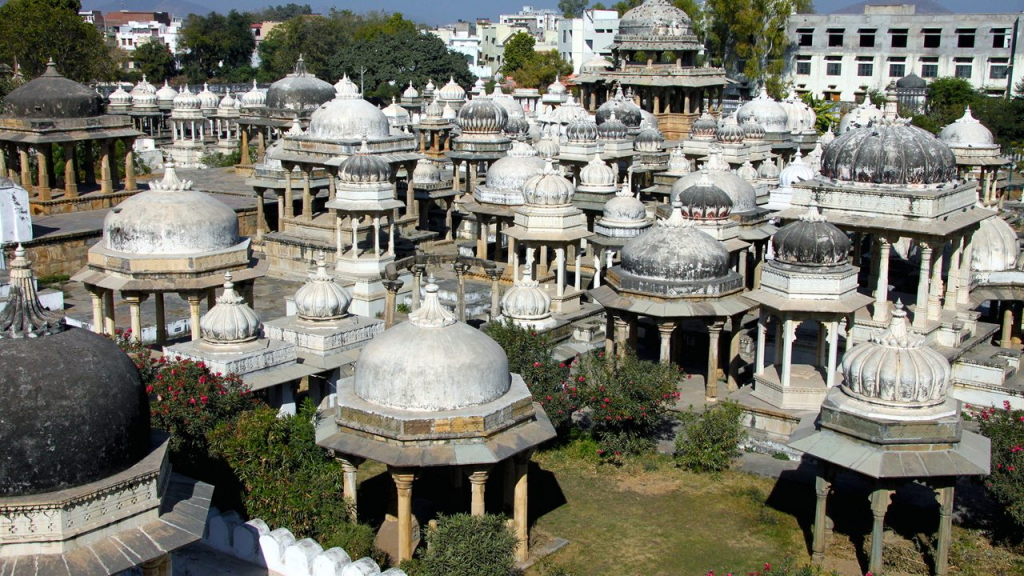
The Ahar Cenotaphs: A Glimpse into Royal History
The Ahar Cenotaphs Udaipur tell a captivating story that began in 1710 with the creation of a memorial honoring Maharana Amar Singh II. Known for his unbroken streak in battles, this revered Maharana laid the foundation for a timeless tradition of royal remembrance. Nestled within Ahar Udaipur, this historical site soon evolved into a monumental tribute to the valor and legacy of Mewar’s rulers.
One of the most iconic structures among the Ahar Cenotaphs is that of Maharana Sangram Singh, constructed in 1734. This majestic cenotaph stands out for its architectural splendor—featuring a grand porch supported by 56 intricately carved pillars. At its core lies a stunning octagonal dome gracefully elevated by eight smaller pillars, a true marvel within the Ahar Cenotaphs Udaipur. This particular cenotaph is especially significant as it serves as the final resting place of Maharana Sangram Singh and his 21 queens, symbolizing the deep-rooted traditions of royal Mewar.
Spanning centuries, the Ahar Cenotaphs have grown into a collection of over 250 memorials, each one narrating the legacy of Mewar’s illustrious rulers. These structures, situated within the tranquil expanse of Ahar Udaipur, reflect the dynasty’s enduring reverence for their ancestors.
The narrative extends into the modern age with the most recent addition in 2004—the cenotaph of Maharana Bhagwat Singh, the last Maharana of Udaipur. This poignant monument within the Ahar Cenotaphs bridges history and modernity, reminding visitors of the royal heritage that still resonates today. Just steps away, the Ahar Museum Udaipur enhances the experience by preserving and showcasing rare artifacts, stone carvings, and relics tied to the Ahar Cenotaphs and the Mewar dynasty. For those visiting Ahar Museum and exploring Ahar Cenotaphs Udaipur, the journey becomes a walk through centuries of regal tradition and architectural excellence.
Exploring the Ahar Museum: A Repository of Mewar’s Royal Legacy
Located near the Ahar Cenotaphs, the Ahar Museum holds an impressive collection of artifacts that provide further insight into the grandeur of the Mewar dynasty. The museum is a must-visit for anyone interested in exploring Udaipur’s royal history. It houses a diverse range of exhibits, including sculptures, coins, and ancient inscriptions, all of which help visitors understand the rich cultural heritage of Udaipur and its royal family.
The Ahar Museum in Udaipur offers an extensive collection of artifacts that span centuries. Among the most notable pieces in the Ahar Museum are sculptures of Hindu gods, religious icons, and architectural fragments that were recovered from the Ahar Cenotaphs and other nearby sites. These sculptures and artifacts offer a glimpse into the religious and cultural practices of the Mewar dynasty.
The Ahar Museum in Udaipur also features a variety of historical records and inscriptions, some of which date back to the 8th century. These inscriptions are crucial in understanding the historical timeline of the region, providing a direct connection to the rulers who built the Ahar Cenotaphs.
Entrance Fee & Opening Times
The Ahar Cenotaphs Udaipur offer a unique, offbeat experience with no official entrance fee or designated tourist facilities. There are no clearly defined opening hours, and during our early morning visit, we found the gate closed. Fortunately, a helpful guard allowed us in, and a small tip was appreciated.
For those planning to visit the nearby Ahar Museum Udaipur, it’s open from 10:00 AM to 4:30 PM, closed on Fridays and national holidays. Entry to the Ahar Museum costs just 3 INR. Both the Ahar Cenotaphs and Ahar Museum provide a quiet yet profound look into the royal history of Ahar Udaipur.
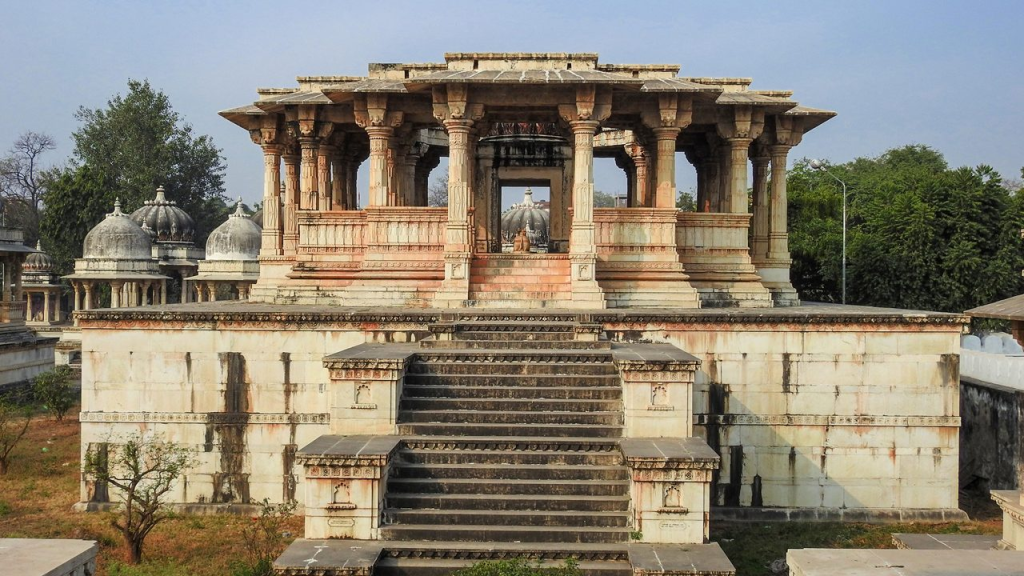
The Significance of Ahar Cenotaphs in Udaipur’s Culture
The Ahar Cenotaphs in Udaipur are more than just memorials; they are symbols of the cultural and religious values of the Mewar dynasty. Each cenotaph tells a story, not just of the ruler it commemorates, but also of the era in which it was constructed. The Ahar Cenotaphs are testament to the Mewar kingdom’s dedication to their traditions, offering a glimpse into the royal customs, beliefs, and funerary practices that shaped the history of Udaipur.
Each structure at the Ahar Cenotaphs is adorned with intricate carvings, featuring depictions of gods, religious symbols, and motifs of nature. These carvings showcase the artistic skills of the craftsmen who were commissioned to design and build these memorials. The fact that these cenotaphs have stood the test of time is a testament to the craftsmanship and dedication of the Mewar artisans.
Ahar Museum Udaipur: Preserving the Past for Future Generations
The Ahar Museum in Udaipur plays a crucial role in preserving the region’s rich history. It serves not only as a repository for historical artifacts but also as an educational center where visitors can learn about the royal traditions and cultural practices that have shaped Udaipur’s heritage. The museum’s collection is a living testament to the people and rulers who lived in the region, and it is through this collection that the stories of the Ahar Cenotaphs come alive.
Visitors to the Ahar Museum Udaipur can explore various exhibits that highlight the cultural significance of the cenotaphs and other royal monuments in the region. The museum also provides valuable insights into the architectural evolution of the cenotaphs and the royal cremation grounds at Ahar, making it an essential stop for anyone interested in the history of Udaipur.

Top Tips for Visiting Ahar Cenotaphs Udaipur
When exploring the serene grounds of Ahar Cenotaphs in Ahar Udaipur, keep these quick tips in mind:
Remove Your Shoes: Always take off your shoes before stepping onto any of the Ahar Cenotaphs as a sign of respect. Walking between them with shoes is acceptable.
Photography Caution: Though photography is officially prohibited at Ahar Cenotaphs Udaipur, enforcement is often relaxed. If you choose to take photos, do so discreetly and respectfully—especially during quiet hours.
Dress Modestly: While there’s no strict dress code, it’s best to wear respectful clothing when visiting Ahar Cenotaphs or Ahar Museum Udaipur to honor the cultural and sacred nature of the site.
Where to Stay in Udaipur: Comfort and Luxury Await
When visiting the majestic city of Udaipur, choosing the right place to stay can greatly enhance your experience. For travelers seeking modern comforts with a trusted name, Howard Johnson by Wyndham is an excellent option. Conveniently located and offering a blend of contemporary amenities and warm hospitality, Howard Johnson provides a peaceful retreat after a day of exploring Udaipur’s historical gems like the Ahar Cenotaphs and Ahar Museum Udaipur.
If you’re looking to indulge in a more opulent experience, the city is home to numerous luxury hotels in Udaipur that offer breathtaking lake views, regal architecture, and top-tier services. From heritage palaces converted into 5-star resorts to boutique hotels that provide personalized luxury, there’s no shortage of premium accommodations. Many of these luxury hotels in Udaipur also offer curated cultural experiences, spa treatments, and fine dining, making your stay truly memorable.
Conclusion: Exploring Ahar Cenotaphs and Ahar Museum Udaipur
In conclusion, the Ahar Cenotaphs Udaipur are an essential part of the city’s royal heritage, offering insight into the grandeur and rituals of the Mewar dynasty. The Ahar Museum Udaipur, located in close proximity to the cenotaphs, further enhances the understanding of this historical landmark by showcasing artifacts that date back to ancient times. For anyone visiting Udaipur, a trip to the Ahar Cenotaphs and Ahar Museum is an opportunity to delve deep into the royal history of the region and experience the rich cultural legacy of the Mewar kingdom.
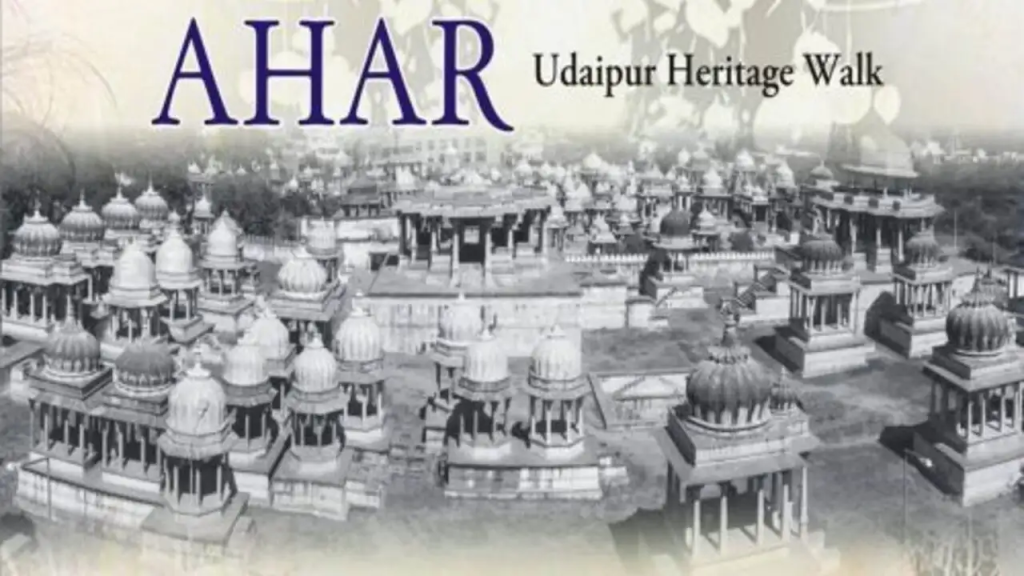
FAQS
What are the Ahar Cenotaphs in Udaipur?
The Ahar Cenotaphs are a collection of over 250 royal memorials built in honor of the Mewar kings and queens. Located a few kilometers from the city center, they serve as a significant historical site showcasing the grandeur and legacy of Udaipur’s royal lineage.
Why are the Ahar Cenotaphs important in Udaipur’s history?
The Ahar Cenotaphs are important because they mark the royal cremation grounds of the Mewar dynasty. They symbolize centuries of royal tradition and architectural heritage, making them an essential part of Udaipur’s history and culture.
What is the Ahar Museum, and what can visitors expect to see there?
The Ahar Museum, located near the cenotaphs, features a collection of rare artifacts, including sculptures, inscriptions, and coins. It provides deeper insight into the lifestyle, religion, and traditions of the Mewar rulers.
Are Ahar Cenotaphs included in a typical Udaipur sightseeing tour?
While not always on standard itineraries, the Ahar Cenotaphs are a must-visit for those seeking a deeper cultural and historical experience. Many customized Udaipur sightseeing tours include a stop here for history enthusiasts.
Is there an entry fee or fixed timing for visiting Ahar Cenotaphs?
There is no official entry fee or clearly posted opening hours at the Ahar Cenotaphs. Visitors often rely on the presence of a guard for entry, especially in the early morning.
What is the best time to visit Ahar Cenotaphs and Ahar Museum Udaipur?
Early mornings are ideal for visiting the Ahar Cenotaphs for a quiet experience. The Ahar Museum Udaipur is open from 10:00 AM to 4:30 PM, except on Fridays and national holidays.

